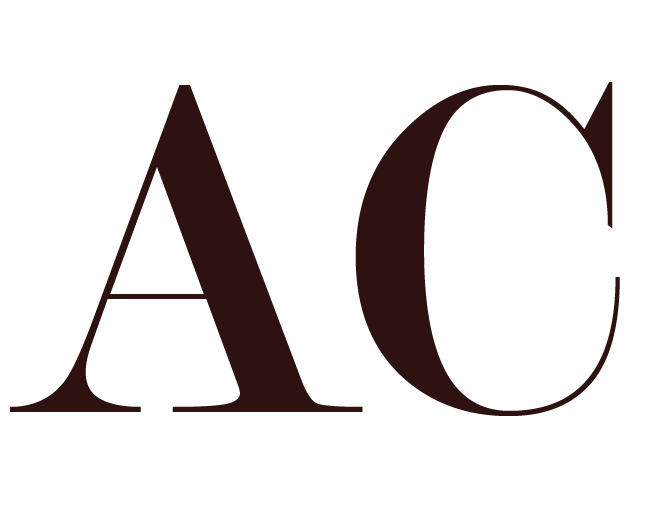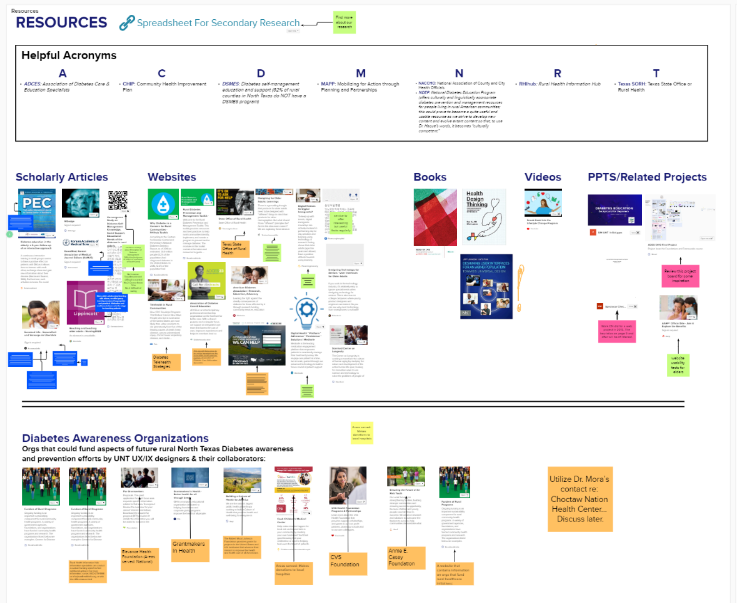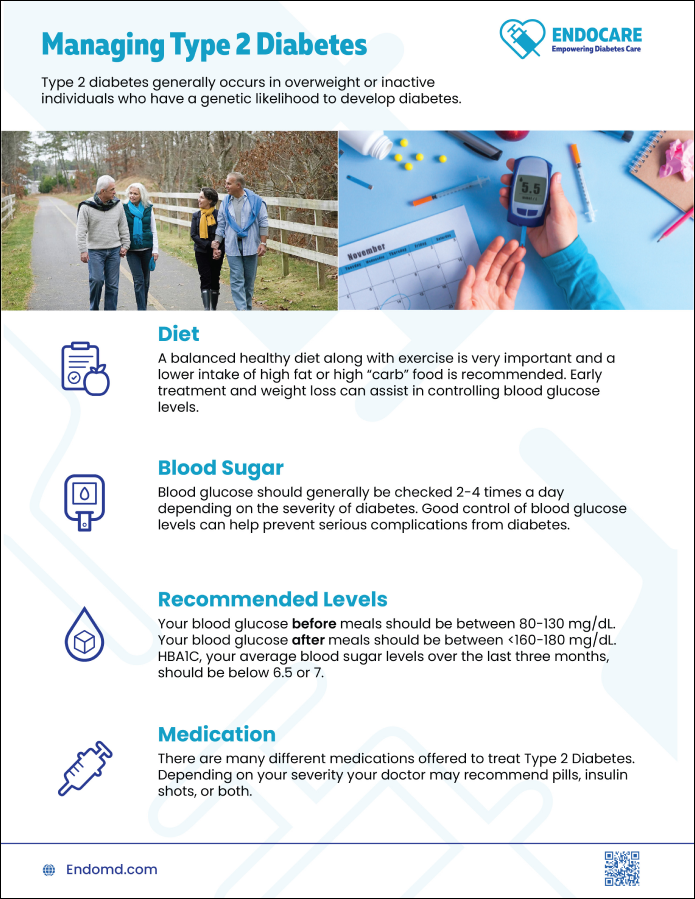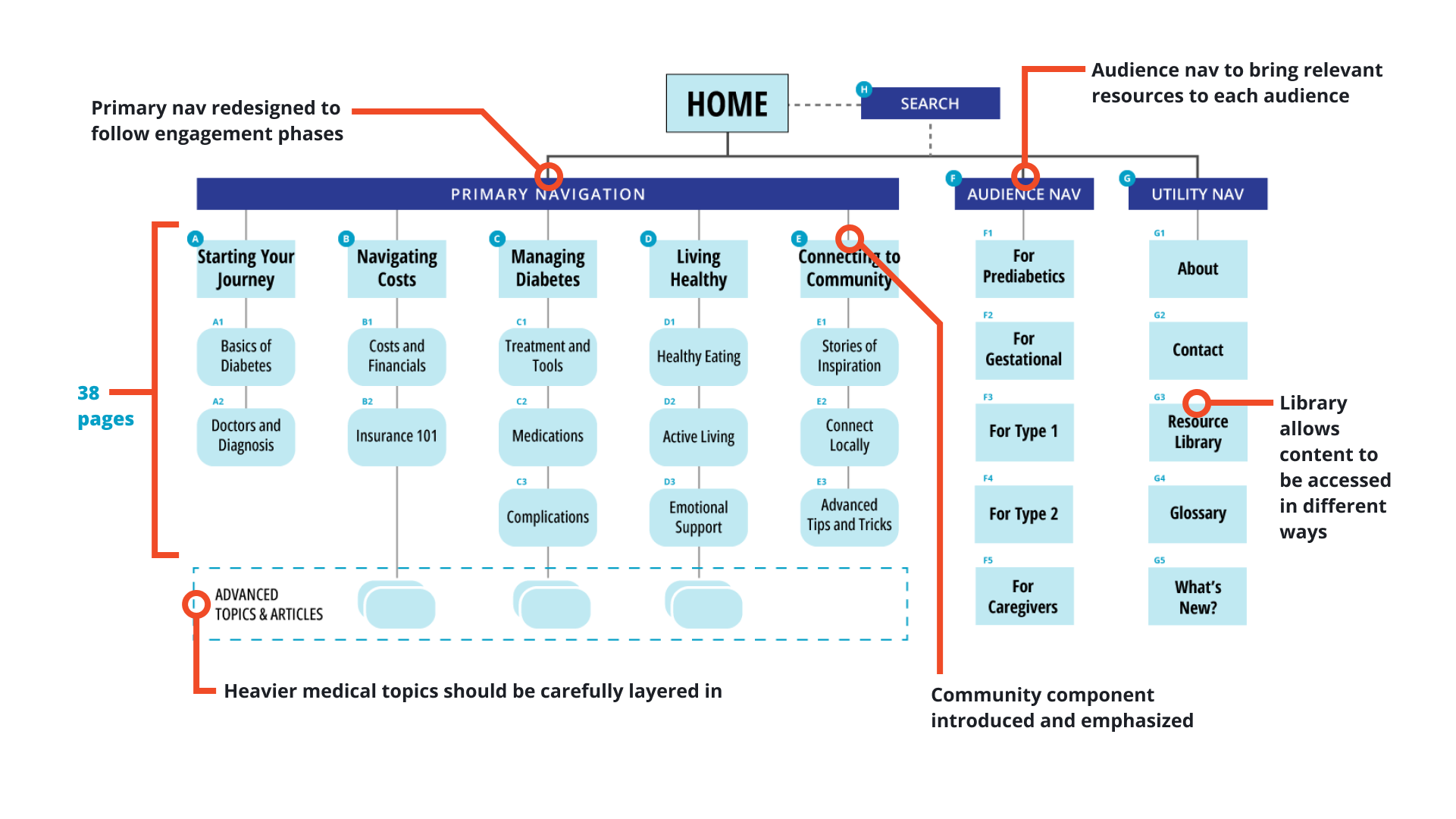
Bridging the Gap in Diabetes Education on Behalf of Rural Texans
EndoMD is an online educational resource that aims to make diabetes education accessible to patients.
Team
11 UX Designers split into multiple teams including research, content design, branding, and web
Role
Content Design Lead, Research
Duration
8 weeks
EndoMD sought to expand their educational services to rural Texans, who face multiple barriers to accessing proper medical information and treatment for Diabetes.
Problem
Barriers for rural Texans:
Limited access to medical resources
In Denton county, one primary care physician is demanded to provide services to 1,721 patients. (Texas Health and Human Services, 2019)
Cost of medications
The financial toll that diabetes management takes on lower-income patients distracts them from taking their medication on a regular basis.
Lack of understanding
The failure of the healthcare providers and patients to understand diabetes is progressive disease.
As a member of the research team, we worked in three phases:
Research
Our initial goal was to understand stakeholder needs, learn more about the disease and its impact on patients, and further define our problem.
1. Discovery
Stakeholder Meetings
We met with Dr. Wasim Haque to better understand the disease, his current impact on patients, and establish the direction for the project.
Literature Review
Based on our initial finding from the stakeholder meetings, we dived in further to explore misinformation, rural needs, and diabetes distress.
“What Are Ways”
We used our top 3 WAW statements to guide our next phase of research:
What are ways to promote a sense of ownership from patients?
What are ways to design resources that engender trust with our target audience?
What are ways to simplify confusing language around diabetes?
We conducted 6 interviews with people living with Diabetes in rural Texas and 3 interviews with healthcare professionals. We captured our insights in 4 main takeaways:
2. User Interviews
Community is essential
Family support is essential in making lifestyle changes.
Peer support was most effective in managing mental health with diabetes.
The healthcare system fails diabetic patients
Lack of finances serves as a barrier for diabetes management.
Insurance companies look at the patients like they are the problem.
Diabetes education is not standardized
The majority of patients spoken to had never received a formal diabetes education.
Rural areas lack proper medical education from healthcare providers.
Misinformation causes a lack of trust
"Am I really taking the best medication for me? I could Google it....but would I even trust it?"
Participants interacted with the EndoMD site and other diabetic education sites, so we could uncover what wording, layout, and navigation styles allow users to learn most effectively. We captured 4 main takeaways:
3. Usability Testing
Language should be digestible by all
Diabetic terminology needs to be delivered through simple vocabulary.
"I like things short, sweet, and simple."
Information should be easy to find.
The landing page should prominently feature resources related to managing diabetes.
"I would expect to find keywords in the title of the videos."
Testimonials build trust.
"One thing that helps people with diabetes is to know that people are also going through it."
Phone/desktop views should be responsive.
Information should be presentable on the phone both horizontally and vertically.
Older adults interact with mobile devices in unexpected ways.
These takeaways informed the building blocks of our action plan
Solution
Our building blocks informed our strategy for a redesign of content, branding, website, and audiovisual.
I led the content design team in increasing accessibility of online diabetes information and resources. My strategy was informed by the building blocks—build trust, encompass, and clarify.
1. Content
Research Findings
Technical jargon and excessive medical terminology make it difficult to understand
Implementation
Familiar language and commonly used words and phrases
Use of only one type of media or channel of information limits those who prefer to print their information or watch videos
Provide users with the option to download given articles as an infographic and with links to relevant videos
Short articles with section breaks for easy readability and retention of meaning
Titles should give a clear expectation of the content within the article
Long articles and posts covering multiple topics can be overwhelming
Sources and citations are written at the end of the article
Including sources builds trust
Simplified content increases retention.
Providing options on how to consume media keeps users engaged in the content.
Media created to fit on 8.5”x11” size paper to maintain accessibility.
White background to save ink/toner for users with limited access. (Black & White version available)
Information is broken into sections for easier readability.
Include graphics and icons to make it more visually appealing and recognizable
Solution (cont.)
The next three strategies and frameworks were informed by my research and content strategy.
Using the research we conducted, the branding strategy aims to communicate their focus on healthcare and diabetes management while also building a memorable brand identity that resonates with our audience and builds and sustains trust.
This was achieved through use of healthcare-related colors, senior-friendly typography choice that enhances legibility and comprehension, and a logo depicting a syringe and a heart to visually communicate the idea of diabetes management.
Building blocks: Build trust, Clarify, Encompass
2. Branding
Guided by the content strategy developed to increase accessibility, our recommendations to increase usability were as follows:
To create searchable resources
Create consumable content through font sizes and contrast
Build tappable elements such as buttons and hyperlinks
Add in clean visuals.
Building blocks: Educate, Clarify, Encompass
3. Web
4. Audiovisual
We elevated the educational content through short videos to
Increase engagement and retention
Accommodate for visual and auditory learning styles
Build trust with audiences.
Building blocks: Educate, Clarify, Build Trust
Our team has set the groundwork for the future research and design work that is currently underway and will lead to sustainable growth for EndoMD. We developed the following strategy:
Next Steps






















